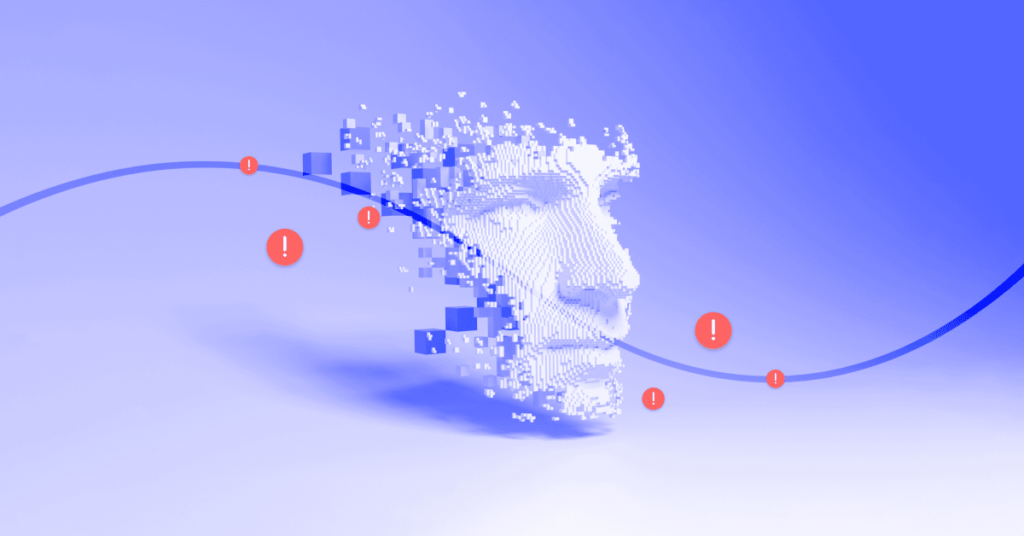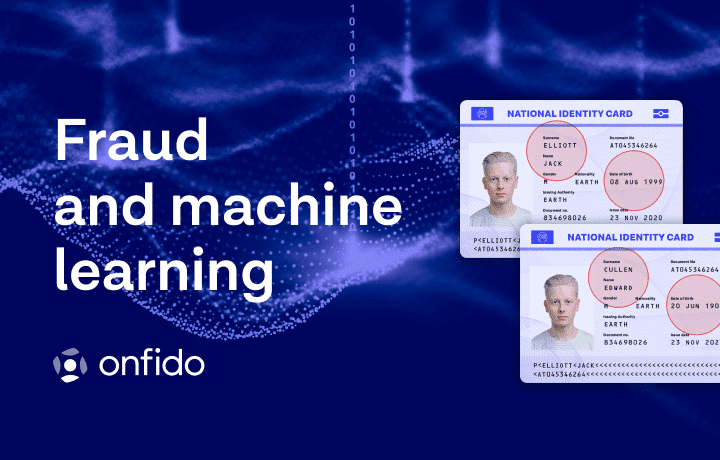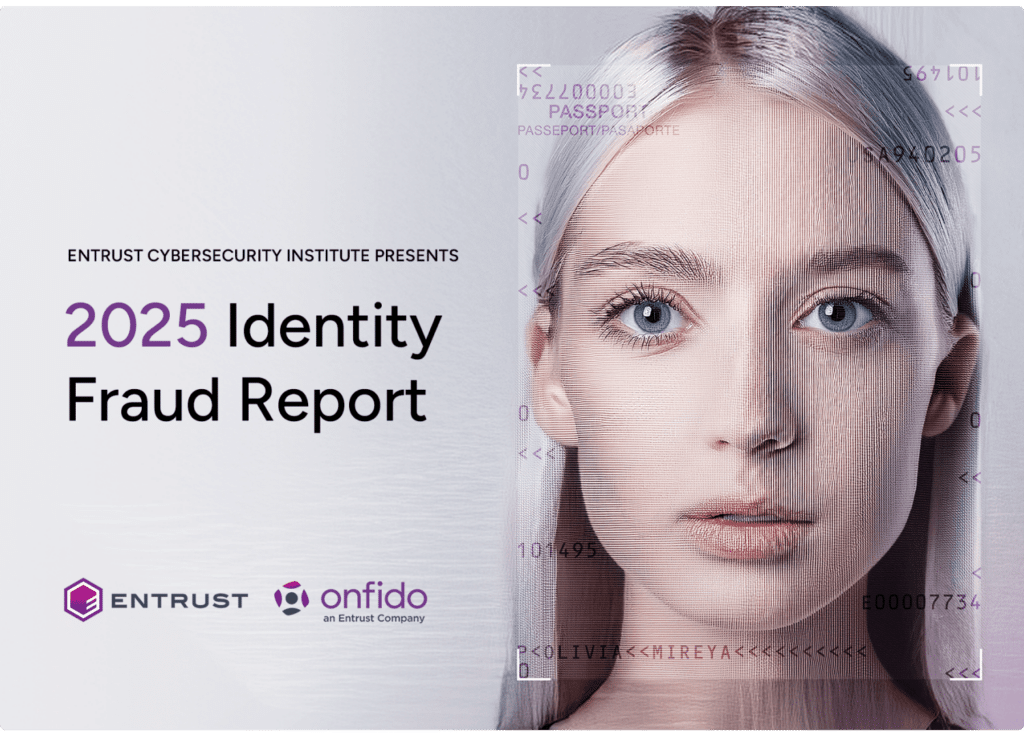
The digital realm is witnessing a burgeoning threat to identity verification processes in the form of deepfakes. Until recently, deepfakes were more rare due to the technological sophistication required to produce them. But now, the increased availability of generative AI and face-swap apps are equipping fraudsters to significantly increase their deepfake fraud attempts. Powered by machine learning algorithms, deepfakes provide a medium to fabricate or alter audiovisual content with a high degree of realism.
As technology advances, the specter of deepfakes looms large over the domain of identity verification, rendering traditional verification methods less effective and paving the way for fraudulent activities. Businesses need to take note and be prepared with their own advanced technology defenses. In this post, we delve into the mechanics of deepfakes, their impact on identity verification, and the steps businesses can take to safeguard against deepfake-induced fraud.
Understanding the mechanics of deepfakes
Deepfakes, blending ‘deep learning’ with ‘fake,’ utilize artificial intelligence to create or alter audio, video, or image files realistically. Through deep learning algorithms, they sift through a large amount of real media to mimic human expressions and speech. This technology enables the mapping of one individual's facial expressions and voice onto another, creating persuasive fake content that is increasingly challenging to distinguish from real footage.
One method of deepfake creation involves collecting extensive data, like numerous images and videos of the target individual, which is then fed into a Generative Adversarial Network (GAN). This network comprises two parts — the generator, which creates new data, and the discriminator, which evaluates the generated data against real data to refine the output. Over time, the generator becomes proficient at creating realistic synthetic media that can deceive human observers and traditional digital verification systems.
Other approaches now use diffusion models, which use a different mechanism to generate realistic data. And there are also simpler methods that use autoencoder models that are simpler than GANs or diffusion models.
The evolution of deepfake technology poses a significant challenge to identity verification services as they can be used to impersonate individuals or forge identity documents convincingly. The ease of creating deepfakes and their potential to deceive makes them a concerning tool for fraud and other malicious activities in the digital realm. With fraudsters more easily accessing the type of technology that can generate deepfakes, making deepfakes more convincing, the need has increased for sophisticated anti-spoofing detection in identity verification.
Deepfake onslaught on facial recognition systems
Facial recognition technology is a crucial component of digital identity verification, yet the advent of deepfakes has introduced several challenges to this domain. Deepfakes exhibit varying levels of sophistication and are generally categorized into three types: face swaps, fully-generated images, and lip-sync videos.
Face swaps
Often synonymous with the term 'deepfake,' face swaps involve superimposing a source face onto a target head. While rudimentary attempts, dubbed 'cheapfakes,' may crudely paste the source face over the target, genuine deepfake face-swaps employ AI to seamlessly morph and blend the source face onto the target, creating a convincingly realistic image.
Fully generated images
Fully-generated images take the technology a notch higher by utilizing generative models trained to create highly realistic images of faces from scratch. These models, nourished with vast datasets, can fabricate faces that do not exist in reality yet pass off as authentic to the unsuspecting eye.
Lip-sync videos
Lip-sync videos, on the other hand, retain the original individual but manipulate their lip movements, often coupled with deepfaked voices, to create the illusion of them uttering words never said in the original footage.
The economic implications of deepfake fraud
The economic toll of deepfake fraud is substantial and growing. Recent statistics reveal that 26% of smaller and 38% of large companies experienced deepfake fraud in the past year, with losses reaching up to $480,000. Furthermore, the trend of deepfake fraud is on the rise, with one-third of businesses reporting video and audio deepfake attacks as of April 2023. Another report cites cybersecurity professionals finding that deepfakes were used in two out of three attacks.
A new Onfido survey on AI shows 68% of business leaders who responded recognize the threat that AI and, more specifically, generative AI presents for accelerating the speed and quantity of fraud attacks, but less than one-third are prioritizing its use in fraud prevention.
Future-proofing identity verification with deepfake detection
As the menace of deepfakes continues to escalate, the call for robust identity verification solutions grows louder. Over two-thirds of consumers are open to utilizing digital identity for online verification, indicating a significant shift towards digital identity solutions over traditional physical IDs. Organizations must heed this call by investing in sophisticated identity security platforms and educating users on the potential risks posed by deepfakes.
One way businesses can counter deepfakes is to leverage liveness biometric verification technology, such as Onfido Motion, powered by deep learning anti-spoofing AI models.
Biometric verification offers an additional layer of protection when paired with document verification. A process that matches a facial biometric to a photo ID helps determine that 1) there is a real person attempting to sign up for a service, and 2) that the identity document belongs to the person presenting it.
The battle against deepfake-induced identity fraud is a rising priority for businesses. With deepfakes poised to continue challenging identity verification processes, staying ahead in terms of technology and awareness is paramount. By understanding the mechanics and implications of deepfakes, organizations can better equip themselves to mitigate the risks and ensure the integrity and security of identity verification processes in the digital age.
Read our annual Identity Fraud Report for the latest fraud trends, insights and prevention tips.






